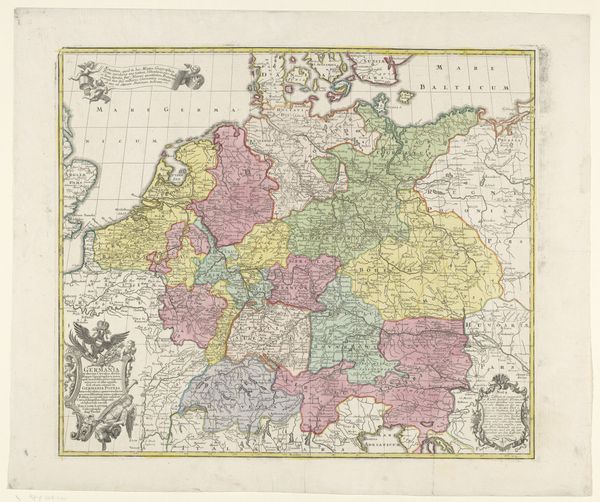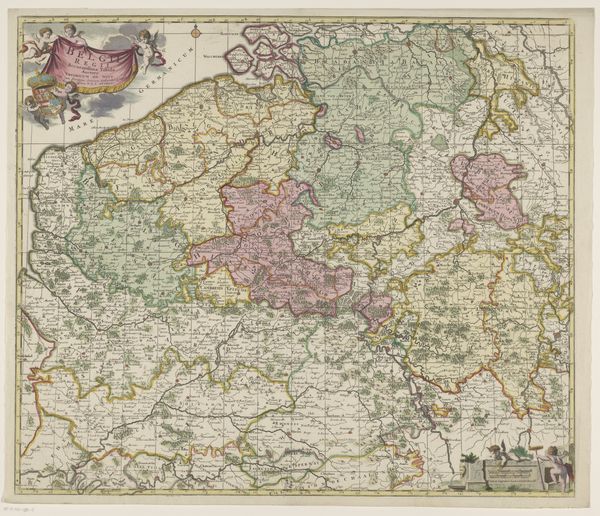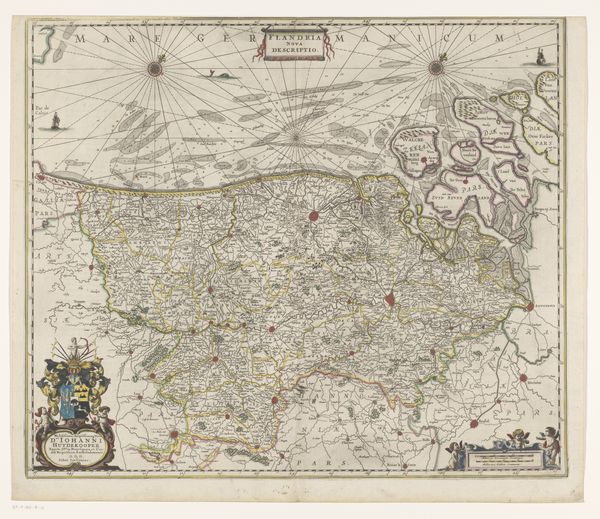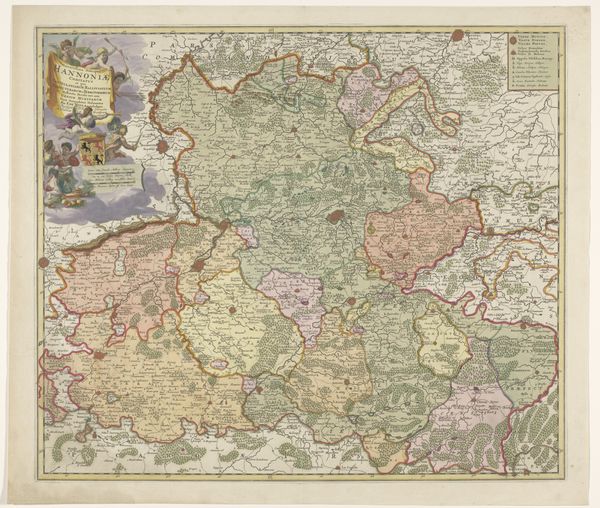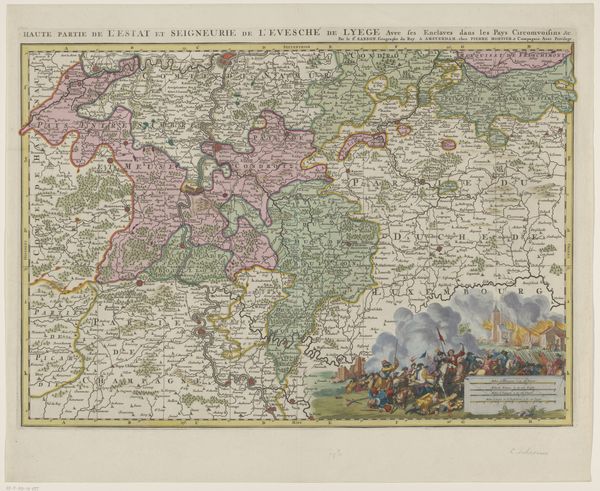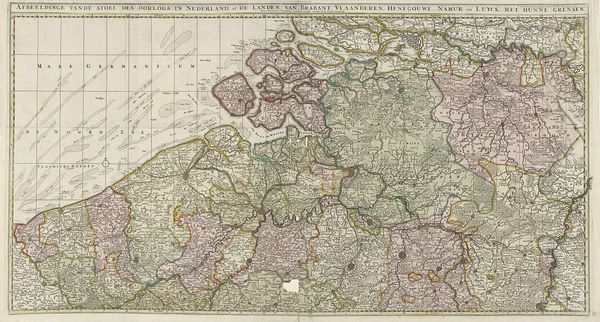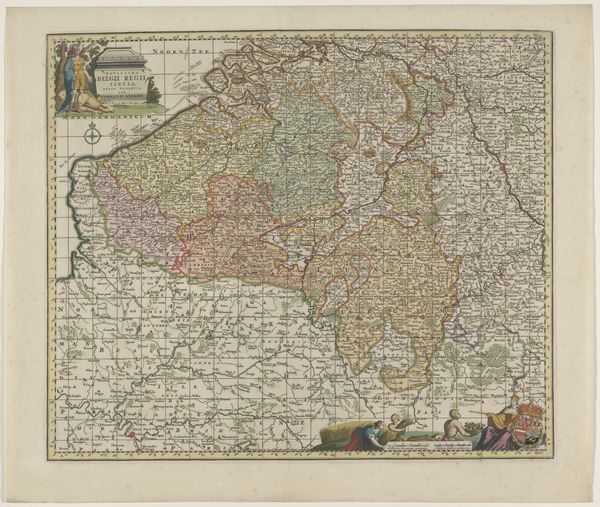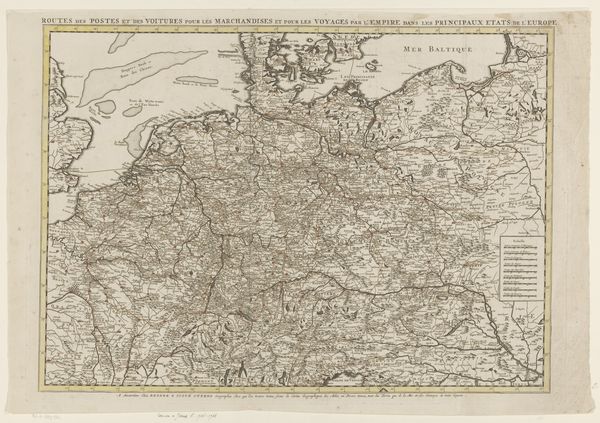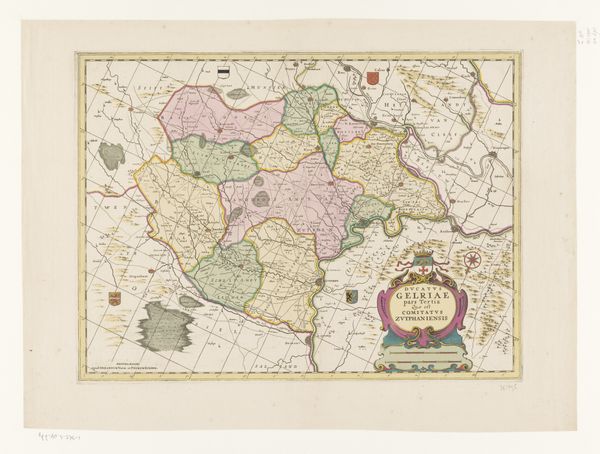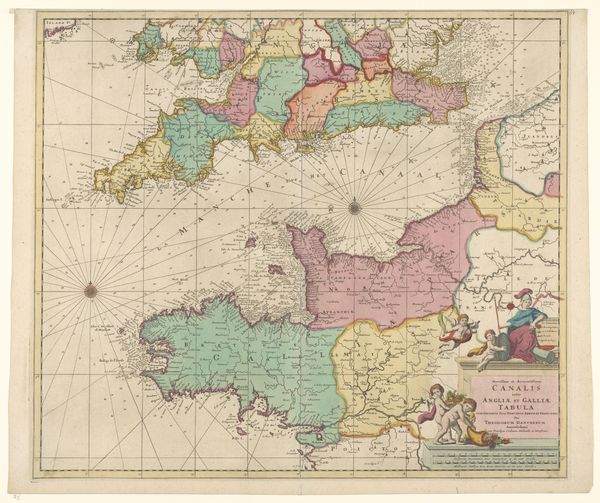
Dimensions: height 489 mm, width 623 mm
Copyright: Rijks Museum: Open Domain
Editor: This is "Kaart van Duitsland," a map of Germany, created by Matthaeus Seutter sometime between 1757 and 1777. It’s an engraving, so a print, and quite decorative, but I wonder… how do we even begin to interpret a map as a work of art? What do you see in this piece? Curator: This isn't just a neutral depiction of geographical space; it’s a carefully constructed representation laden with political meaning. Maps like this served to define and solidify power. Who decided the boundaries, and for whose benefit? Editor: So, you're saying the way Germany is divided up on this map isn’t necessarily “factual,” but represents a specific political perspective? Curator: Precisely. Consider the time it was made – a period of immense fragmentation in the Holy Roman Empire. The varying colors highlight that division, but they also raise questions: who controlled the narrative and who was left out of the picture? Think about how cartography was used as a tool for colonialism, defining territories for exploitation. Can we draw parallels here? Editor: That's interesting. So, the very act of mapping isn't objective; it's an act of asserting control, right? And even the decorative elements... Curator: They contribute to the overall message. Are they celebrating a unified nation, or obscuring internal conflicts? Maps weren't simply for navigation; they shaped understanding, influenced policy, and even justified domination. What stories do you think this map tells about identity and belonging in 18th-century Germany? Editor: I hadn't considered it that way. I guess I assumed maps were… neutral. I see now how much power dynamics are at play. It's less about geography and more about the politics of space. Curator: Exactly. By examining these historical maps, we gain insight into the social construction of territory and the enduring legacy of power relations. Editor: That makes me want to explore maps in art more, but now armed with these questions about identity and power. Curator: Wonderful. Let's look closer at how maps are intertwined with concepts of nationalism.
Comments
No comments
Be the first to comment and join the conversation on the ultimate creative platform.
